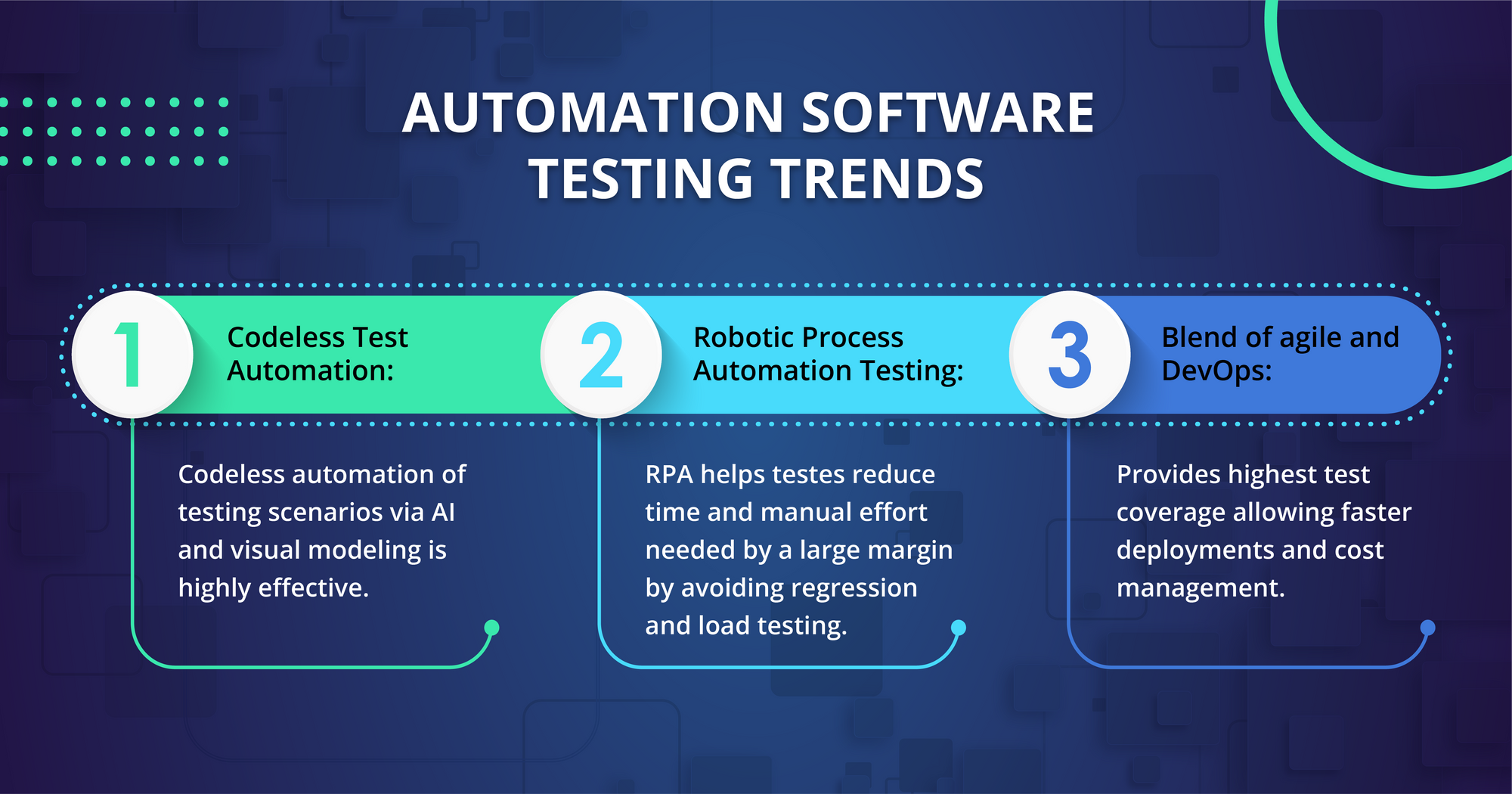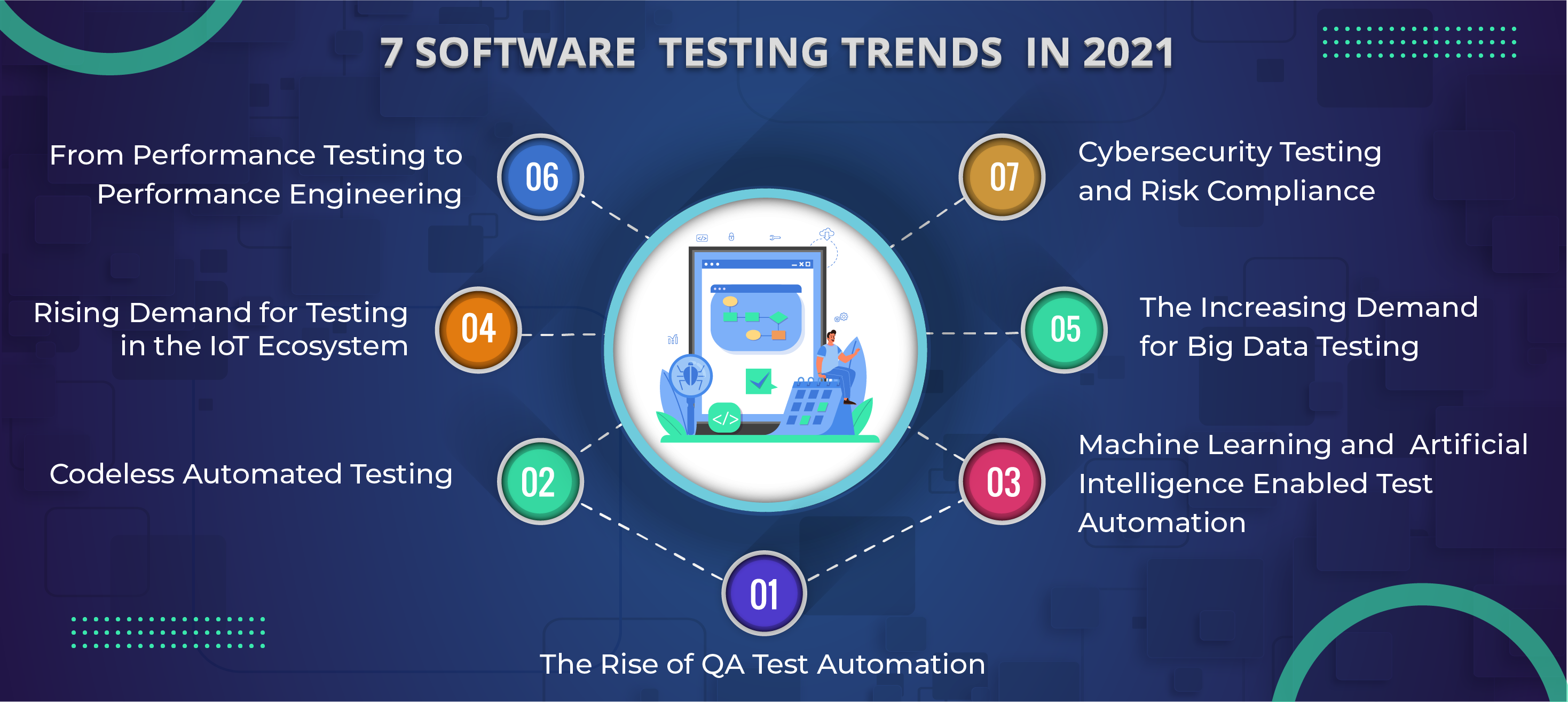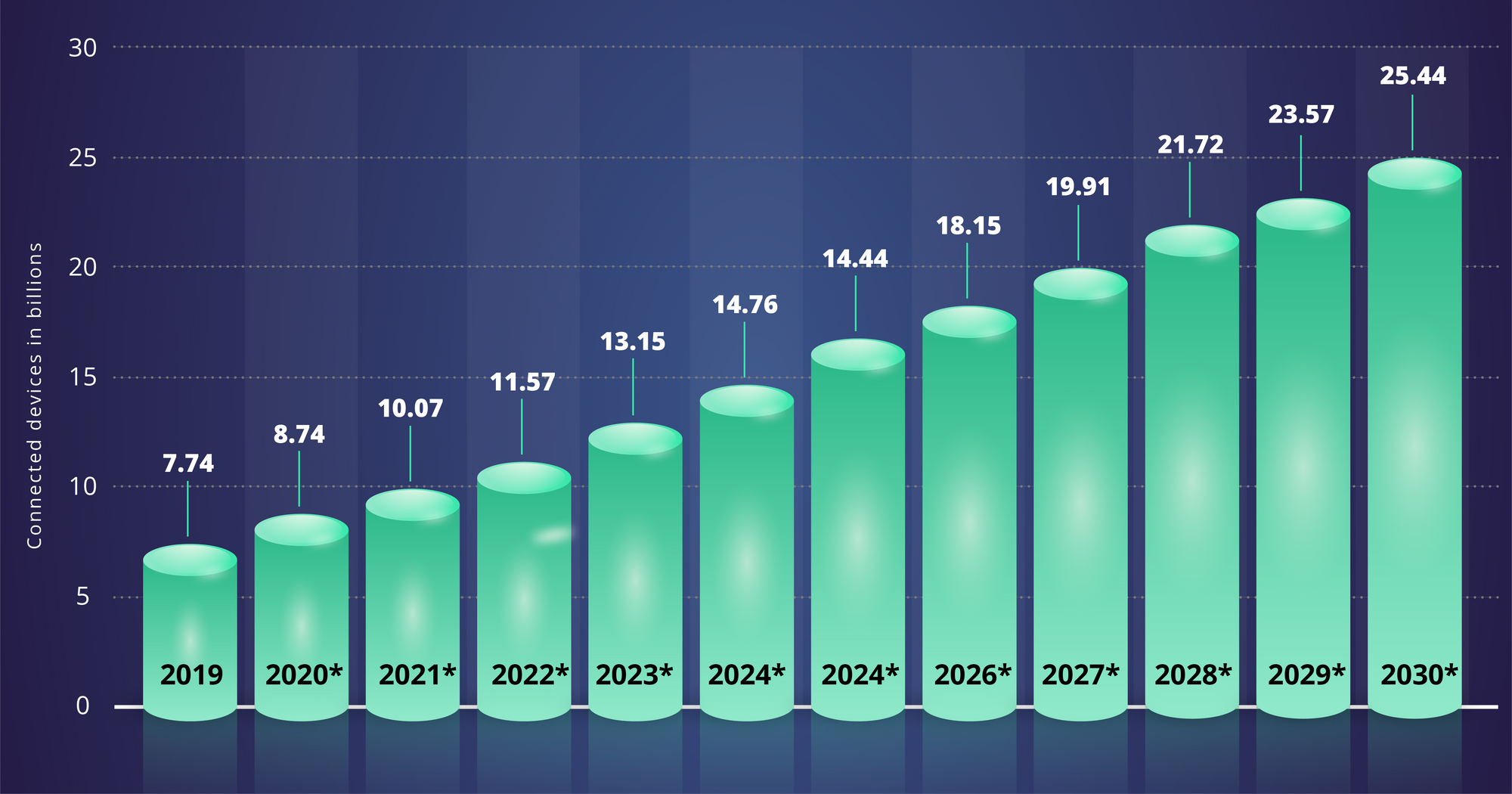Testing is an integral part of the software development lifecycle and changes in tandem and as radically as software development. In a hyper-competitive world, even seconds of application or website downtime come at a high cost. Software testing silently saves the day with its preemptive methods of assessing risk and forecasting failures.
Here are the testing trends that companies must watch out for in 2021.
- The Rise of QA Test Automation
Today, agile and DevOps have created the demand for quality at speed. No wonder various sources slate the global automation testing market to reach $70 bn by 2025, according to the globalnewswire.
The numbers hint at a megatrend, 44% of IT organizations automated 50% of their testing in 2019-2020. Automated testing helps teams execute recurring tasks, identify bugs more precisely and quickly, provide continuous feedback, and execute test coverage. Consequently, organizations that adopt automated testing in their QA processes save a significant amount of time, money, and human resources. Here is the list of few top automation testing trends that will shape the future of the software testing industry:

* Codeless Test Automation: We have discussed this in detail below. Codeless is a powerful tool in test automation. Codeless automation of testing scenarios via AI and visual modeling is highly effective.
* Robotic Process Automation Testing: When it comes to complex data sets, RPA helps testes reduce time and manual effort needed by a large margin by avoiding regression and load testing.
* Blend of agile and DevOps: Provides highest test coverage allowing faster deployments and cost management.
- Codeless Automated Testing
Codeless is already making ripples. Codeless automated testing helps QA engineers create test case scenarios with minimal coding knowledge and minimize time spent on recurring test cases.
- Features of Codeless Test Automation
- The flat learning curve
- East to review by various stakeholders
- Save precious resources
- Self-healing with machine learning and AI
- Complements code-based testing.
- Record and playback ability.
- Minimal Complexity
- Connects to CI and cloud
The organization must leverage codeless in tandem with manual and automated testing to get the best mix of technologies available.
- Machine Learning and Artificial Intelligence Enabled Test Automation
According to the Cambridge University study, Testing comprises 25-40% of the entire developmental expenses, and the total spending on testing exceeded USD 300 bn in 2017. The numbers unequivocally undermine the importance of testing and the use of AI/Ml to bring the expenses down.
We are out from the so-called testing winter and are now making real progress on AI-enabled testing. Here the core areas of focus:
- Defect Diagnosis
- False-Positive Detection
- Optimal Risk Mitigation
- Elimination of Test Case Redundancy
- Portfolio Inspection
- Optimizing the Test Strategy (Near Future)
Keeping track of the frequency of features used might give firms (at least) a hint to what might be relevant to test, what to automate, and even what to build. The main challenge here is mapping these measurements to your test cases and requirements, as well as automatically updating these links to avoid time-consuming manual re-configuration. AI will prove instrumental as we have just begun!

- Rising Demand for Testing in the IoT Ecosystem
IoT device ecosystems are an integration of giant networks of devices, people, processes, and technologies collecting and sharing data over the internet.
Graph source: https://www.statista.com/statistics/1183457/iot-connected-devices-worldwide/
Heading: Growth in Number of IoT Devices Worldwide

Each new device released in the marketplace requires testing between protocols, devices, platforms, OSs, and more. This gives an incredible push to testing requirements as the demand for performance, security, compatibility, usability, and data integrity testing is skyrocketing.
- The Increasing Demand for Big Data Testing
In the grand scheme of things, Big data is playing a vital role by changing many business sectors, including healthcare, telecom, retail, banking, technology, and the media.
For big data to be effective requires end-to-end testing to ensure the quality, accuracy, and integrity of data that is essential for any organization to make informed decisions about market strategies and improving their targeting.
Since enterprise data is growing in complexity every year and business strategies are being built using it, big data testing will play a major role in 2021.
- From Performance Testing to Performance Engineering
The demand for ultra-performing applications has necessitated the shift from performance testing to performance engineering. Earlier, performance testing identified the bottlenecks when development finished, but we see a shift towards performance engineering. QA teams design the application from the beginning of the software development life cycle to address performance issues early in the development cycle. This can save a lot of time later, reducing the need for troubleshooting and rewrites. Performance engineering is also crucial for meeting rapidly changing needs, shorter development cycles, and recurring application releases.
- Cybersecurity Testing and Risk Compliance
In 2021, a multitude of companies have gone digital for the first time, highlighting the importance of Software testing to ensure security and safety. Penetration of digital comes with the need for the security testing of applications, networks, and systems. It is vital to ensure end-user privacy.
From healthcare to e-voting, the issues of cybersecurity and privacy top the list of priority. The damage associated with cybercrime is estimated to hit USD 6 trillion yearly by 2021, as per the Cybersecurity Ventures. AI testing will gain further popularity as complexity and stakes increase.
Embrace These 7 Software Testing Trends!
These seven software testing trends are shaping 2021 and will continue to do so. It is vital to adopt these trends early and create more value because these trends are vital and are a window to the future.
Embrace these new trends!
 All Posts
All Posts


